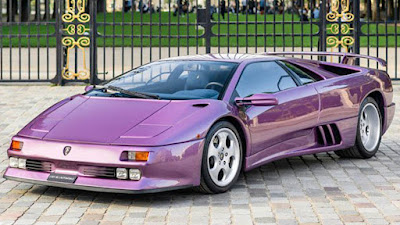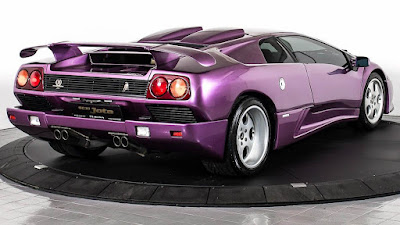Road BEAST - Mazzanti Automobili, the renowned Italian automotive design and coach builder, recently unveiled its masterpiece, the Mazzanti Evantra supercar, at the prestigious 2013 Top Marques Monaco event. This exclusive supercar, limited to a production run of only five units worldwide, is a testament to exquisite craftsmanship and personalized luxury, with each unit uniquely tailored to the preferences of its discerning owner. Crafted by skilled hands in Italy, the Evantra is a symbol of automotive artistry.
 |
| Mazzanti Evantra. (Picture from: Carbuzz) |
At the heart of the Evantra lies a formidable 7.0-liter V8 engine, delivering an impressive 701 horsepower and a torque of 625 lb-ft. Sourced from the Corvette lineage, this powerhouse is strategically placed in the middle of the car, featuring titanium components for both piston and valve parts. The transmission prowess is harnessed through a six-speed sequential transmission system, channeling the entire force to the rear wheels for an exhilarating driving experience.
 |
| Front view of Mazzanti Evantra. (Picture from: Carbuzz) |
Collaborating with Ysim, experts in F1 and Le Mans racing cars, the development process focused on optimizing the aerodynamic package. The chassis, constructed from chrome-molybdenum materials, ensures a featherweight of 1,300 kilograms, enabling the Evantra to accelerate from 0 to 100 kph in a mere 3.2 seconds before attaining a maximum speed of 350 kph.
 |
| Interior view of Mazzanti Evantra. (Picture from: Carbuzz) |
The Evantra offers enthusiasts a choice between two distinctive body options – the Pro-Body crafted from composite carbon fiber and the One-Body entirely fashioned from aluminum. The interior is a haven of opulence, featuring special leather materials that can be customized to the owner's preference, even incorporating exotic luxury leathers.
 |
| Mazzanti Evantra supercar with the coolest suicide door-type. (Picture from: Carbuzz) |
Inside the cabin, the center console showcases data from the AIM and Bosch audio-navigation system, while a Tricolore engine start button takes center stage, easily accessible on the steering wheel alongside a small display for transmission position. Mazzanti has meticulously curated an automotive masterpiece that seamlessly marries performance with personalized luxury.
 |
| Rear view of Mazzanti Evantra. (Picture from: Carbuzz) |
For those captivated by the Evantra's allure, Mazzanti has officially opened orders. However, this exclusivity comes at a price, both in terms of funds and patience. The assembly process for each model spans several months, emphasizing the meticulous craftsmanship involved.
 Undoubtedly, the Evantra's price tag will ascend into seven digits in U.S. dollars, reaffirming its status as a pinnacle of automotive refinement and exclusivity. Embrace the epitome of automotive opulence – the Mazzanti Evantra. *** [EKA [22112013] | FROM VARIOUS SOURCES | FARANTUBE | CARBUZZ | MOTORAUTHORITY ]
Undoubtedly, the Evantra's price tag will ascend into seven digits in U.S. dollars, reaffirming its status as a pinnacle of automotive refinement and exclusivity. Embrace the epitome of automotive opulence – the Mazzanti Evantra. *** [EKA [22112013] | FROM VARIOUS SOURCES | FARANTUBE | CARBUZZ | MOTORAUTHORITY ]Note: This blog can be accessed via your smart phone.






































